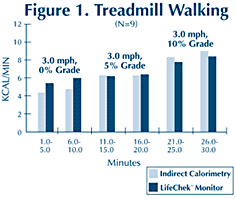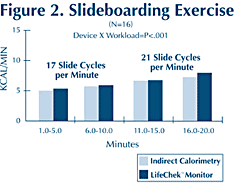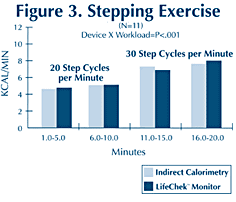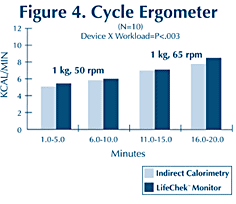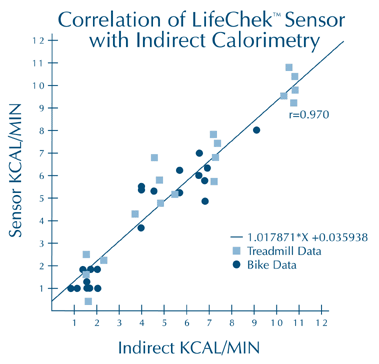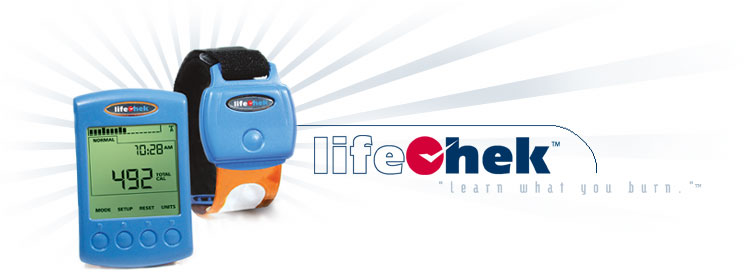
|
|
The Technology Behind LifeChek™ Heat and calories – the relationship LifeChek™ is designed to accurately measure true calorie expenditure regardless of activity. It is based on the fact that we are homeotherms - that is, we attempt to maintain a constant body temperature. In order to maintain a set temperature, the body actively balances the amount of heat generated with the amount lost. When at rest, our body's normal metabolic processes produce just enough heat to counter that which is lost through our body surface. With any additional activity however, there will be extra heat produced.
|
This extra heat that is generated during physical activity must be eliminated to prevent raising our body temperature. Much of this excess heat is eliminated through our body surface. There are four ways in which heat is lost (or sometimes gained by) the body. These are conductive, radiant, convective and evaporative. Of these, conductive heat loss generally plays the smallest role. For instance, a standing individual would only lose conductive heat through the soles of their feet. At rest in normal room temperature setting, the body loses heat mainly by the radiant and convective modes. However, with exercise (or higher environmental temperatures) the body will switch to its most effective means of heat loss, the evaporative mode - perspiration or sweat. |
||
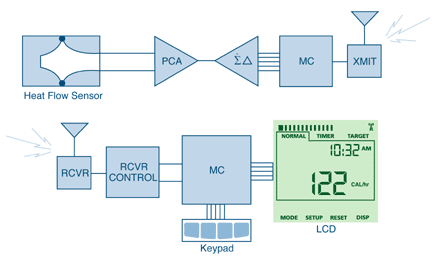 |
||||
| By measuring all four modes of heat loss from the body surface and knowing the body surface area, it is possible to directly determine the number of calories expended. This is precisely what the LifeChek™ calorie sensor does. It consists of specially constructed "intelligent" heat flow sensors, i.e. a heat |
flow sensor under microprocessor control, which transmits periodic heat flow measurements to a display unit. The display unit uses the heat flow information plus the individual's body surface area (calculated from height and weight) to calculate the calorie expenditure.
|
|||
|
|
||||
|
LifeChek™ Clinical Studies Validity of a Portable Heat Sensing System to Measure Energy Expenditure. J Jakicic et al, Medicine & Science in Sports & Exercise Vol 25, 6, June 1993. Estimated Energy Expenditure Using the Kalx Heat Flux Monitor During Several Modes of Physical Activity. C Winters et al, Medicine & Science in Sports & Exercise Vol 30, 5, Supplement June 3 1998. |
Intellectual Property LifeChek™ has two issued patents that cover the core technology for using heat-flow to measure calorie expenditures; patents #5,524,618 and 5,813,994. Additional patent applications are pending. |
|||
|
|
|
|
|
|
|
|
|
|
|
|||||||
|
|
|
|
|
|
|
|||||||||
